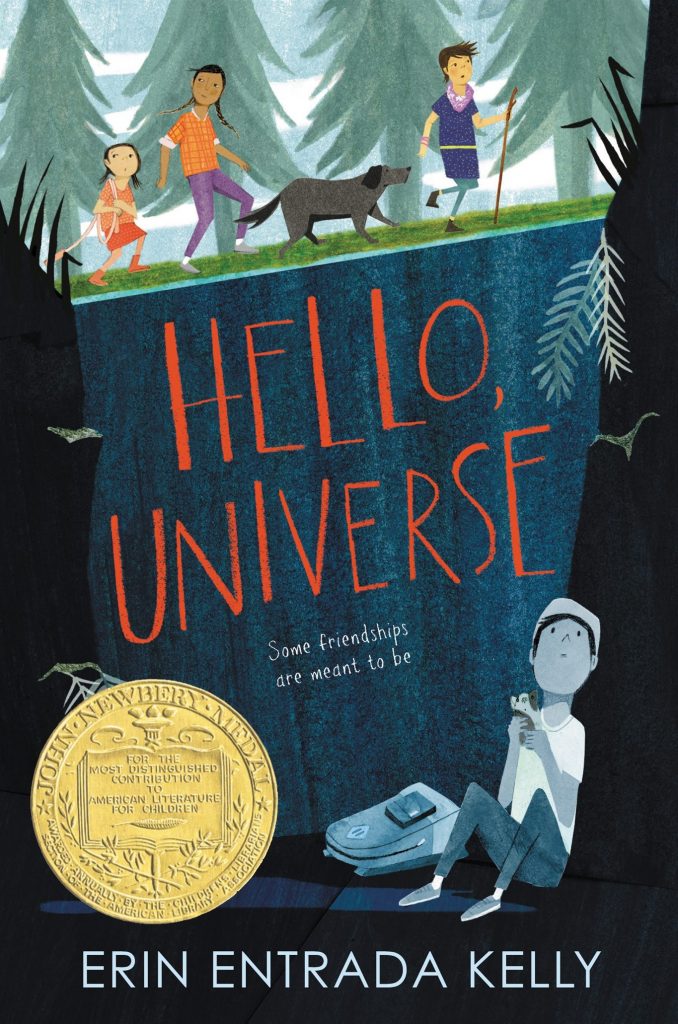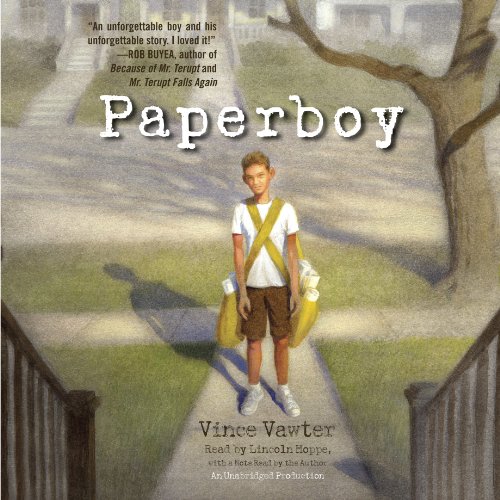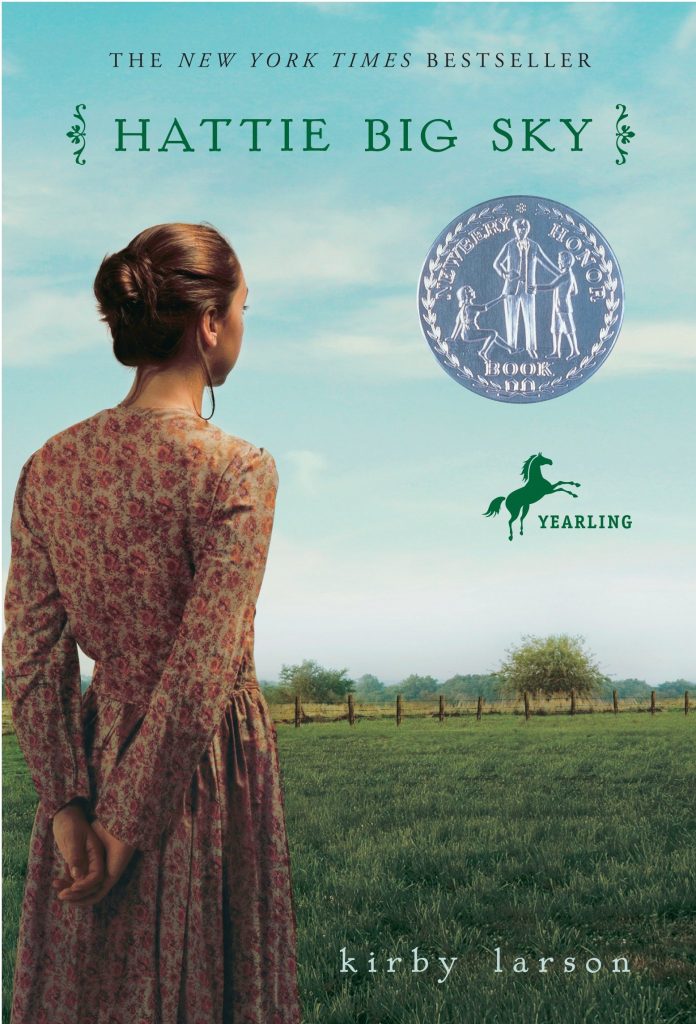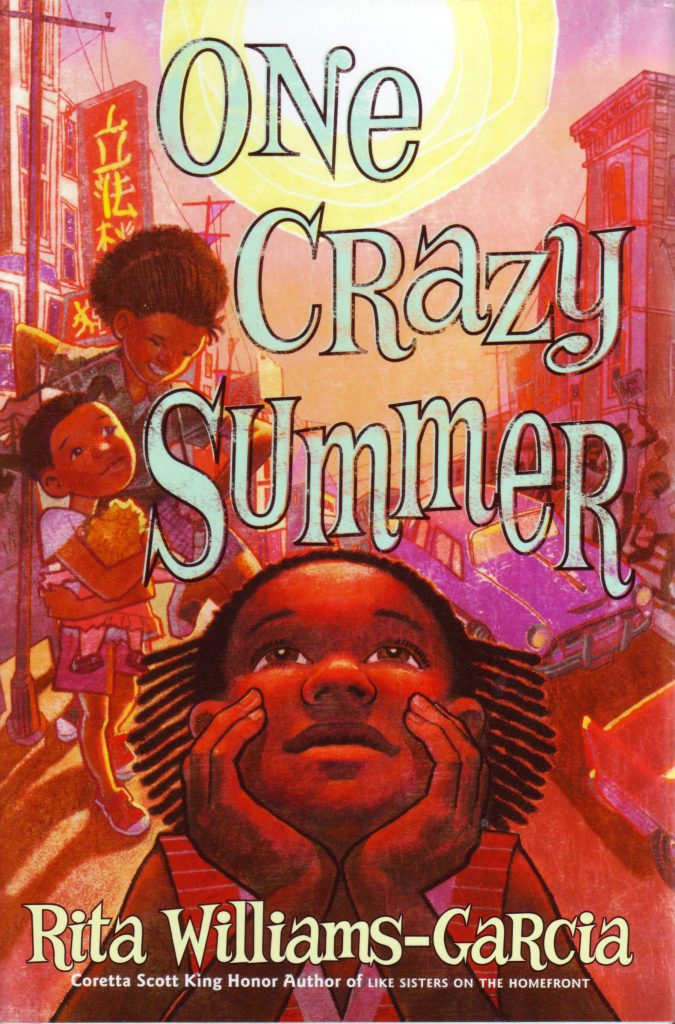
BIBLIOGRAPHY
Krosoczka, Jarrett J. Hey, Kiddo. Read by Jarrett Krosoczka and a full cast. New York: Scholastic Audiobooks, 2018. Unabridged, 2 hr., 50 min.
PLOT SUMMARY
Jarrett’s family life has always been a little bit out of the ordinary. As a toddler, he lived with his drug-addicted mother, Leslie, who often let strange men in the house and wasn’t very available to her three-year-old son. Joe and Shirley, Leslie’s parents, quickly stepped in to raise their grandson from his toddlerhood all the way through high school graduation. Hey, Kiddo deals with Jarrett’s childhood and teenage pain: Although Leslie makes promises of recovery, she hardly ever follows through, and Jarrett knows next to nothing about his father. But this book is also a thank-you letter to Jarrett’s grandparents: Though a little vulgar and a little prone to overdrinking, they do everything they can to make sure their grandson feels loved, and introduce him to his greatest passion, art. The book also gives thanks to Jarrett’s next-door neighbor and childhood friend, Pat; his ever-listening aunt, Holly; his art comic instructor, Mark Lynch; and his long-lost father and half siblings, the Hennessys. Although Jarrett’s childhood is full of inner turmoil against his mother, Jarrett slowly comes to a place of forgiveness and peace, eventually realizing that his mother does love him despite her imperfections. The afterward includes biographical information about Jarrett’s life after college, as well as the lives of his mother and grandparents.
CRITICAL ANALYSIS
There’s no question why this audiobook adaptation of the graphic novel has received so many awards: The listening experience is truly incredible. While fictional audiobooks include a full cast of “characters,” the cast of Hey, Kiddo is uniquely equipped to allow almost the entire voice cast to be made up of the actual people that Jarrett writes about in his memoir; this “real” cast allows listeners to truly immerse themselves in the story. Jarrett manages to find voice parts for just about everyone who is involved in his memoir. Jarrett voices himself, of course, but his friend Pat also voices himself, his aunt Holly voices herself, his long-lost father, Richard, voices himself, and even his old art teacher, Mr. Shilale, voices himself. As an added bonus, Jarrett’s daughter voices his kid self while Pat’s son voices Pat’s kid self. Even the baby noises used in the audiobook to announce Jarrett’s foray into the world are noises that Jarrett recorded from the mouth of his own newborn son! Realistic sound effects bring the story to life. Shirley’s squeals as she watches Jarrett’s runaway hamster scurry across the floor are so convincing that listeners might almost believe they are real recordings of the incident. Authentic 90s music like the Club Nouveau’s remix of “Lean On Me” also add greater depth to the audiobook experience.
But while the quality of Hey, Kiddo’s audio is phenomenal, some portions of the storytelling seem random and unfocused. Why, for example, does Jarrett include details about high school gym class and the vulgarity of the men’s locker room? Jarrett doesn’t have any life-changing moments there, and it’s no secret that high school language can be crude. Young Jarrett’s sadness about the destruction of his beloved backyard parking lot seemed equally unfocused. The anecdote doesn’t really illustrate anything about Jarrett or about anyone else. At other moments, I wish Jarrett’s storytelling had more depth. In the epilogue, Jarrett expresses his gratitude for his father and half-siblings. Yet, the story itself hardly mentions them. For most of the story, Jarrett is angry at is father or hurling expletive-filled messages his way. A deeper explanation of Jarrett’s reconciliation would have been helpful. Jarrett also mentions Leslie’s boyfriend Miguel during a few scenes, but then quietly drops him from the storyline, leaving listeners wondering where he went.
Still, while the memoir doesn’t always have focus, it does have authenticity. Jarrett’s memoir is frank—frank about Jarrett’s inner turmoil, frank about his mother’s battle with heroin, and frank about the ways he found peace with his past. Teens who have found themselves in a similar situation will feel understood, hopeful, and encouraged. Teens who haven’t had experiences like Jarrett’s will find a story that inspires empathy and awareness. Young adult librarians should find a place on their shelf for Hey, Kiddo.
AWARDS AND REVIEW EXCERPTS
Winner of AudioFile Earphones Award, 2019
Audie Award Winner, 2020
Odyssey Award Winner, 2020
Booklist Editors’ Choice: Audio for Youth, 2019
Boston Globe-Horn Book Award for Excellence in Children’s Literature Honor, 2019
National Book Award Finalist, 2018
YALSA Award for Excellence in Nonfiction for Young Adults Finalist, 2019
From AudioFile: “A full cast of more than 40 performers brings this powerful graphic novel memoir vividly to life. . . . With music, sound effects, and affecting performances, listeners feel like they are at the dinner table with him and his hard-drinking, foul-mouthed grandparents in Worcester, Massachusetts. As co-producer and co-director, Krosoczka has created a uniquely personal audiobook, casting family and friends in the production. . . . making every interaction incredibly authentic.”
From Booklist: “There have been a slew of graphic memoirs published for youth in the past couple of years, but the raw, confessional quality and unguarded honesty of Krosoczka’s contribution sets it apart from the crowd.”
CONNECTIONS
- Jarrett Krosoczka found his voice through art and comics. After highlighting Hey, Kiddo in the teen section of the library, invite a local comic artist to give a young adult presentation about creating comics. Encourage teens to write their own comic panels. Print out comic panel handouts for teens to take home. Allow them to send in their finished panels and create an online showcase of teen’s comics on the library’s website.
- Create a display of biographical graphic memoirs (like Hey, Kiddo) for teens to browse. The following books are possible candidates:
- Ha, Robin. Almost American Girl. ISBN 9780062685100
- Feder, Tyler. Dancing at the Pity Party. ISBN 9780525553021
- Lewis, John, Andrew Aydin, and Nate Powell (illustrator). March: Book Three. ISBN 9781603094023
- With teens, listen to part of Hey, Kiddo on audiobook. Invite teens to create their own short anecdote as an audiobook with sound effects. Then have a listening party, allowing teens to share their work with others.
- Put out a display of some of the 2020 Audie Awards finalists including Hey, Kiddo. Then allow teens to vote on their favorite audiobooks and hold an awards ceremony for the favorite pick.
- Berry, Julie. Lovely War. Published by Penguin Random House Audio.
- Nazemian, Adb. Like a Love Story. Published by HarperAudio.
- Thomas, Angie. On the Come Up. Published by HarperAudio.
- Acevedo, Elizabeth. With the Fire on High. Published by HarperAudio.
*Note—This book review was created as an assignment for a course at Texas Woman’s University.




